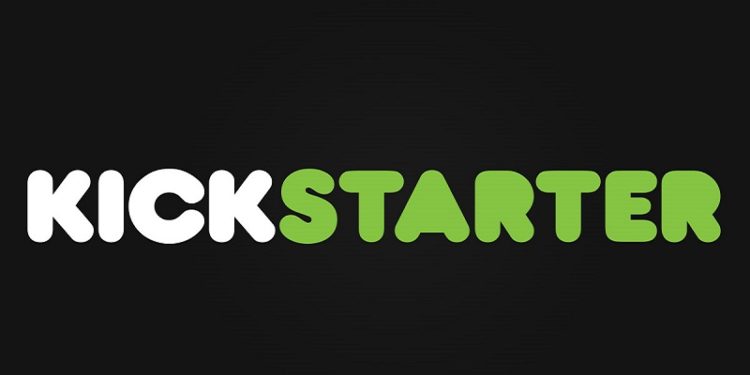Considerations for having a Successful Game-Related Kickstarter Campaign

Would you like to run a successful Kickstarter campaign? Several things are important when considering whether or not to run a Kickstarter (or similar crowd-funding) campaign, including organizational, financial and obligational.
Organizational
- Clear Message: The message of the Kickstarter needs to be crystal clear. It needs to answer the following questions clearly:
– Who is/ are the creator(s)? What is his or her (or their) story? Why did they decide to do this?
– What are they looking to do with this money? Remember to include the fact that the Kickstarter (or other crowdfunding) platform will want to get its share from hosting the campaign in your calculations.
– What are the incentives to give?
– Are there any plans for expansion of this if they get more money than asked? If so what are the expansions? Why should they care?
– When is it expected that people who support the campaign will get their rewards?
– When will (or at least should) the project be completed? If there are delays to the completion date, that should be communicated to the funders as well, including a new estimate of the time it should take to complete the project and the reason or reasons for the delay.
- Professional: The more successful Kickstarters have professional quality, including one or more videos with complete with music and scripted lines. Additionally, the writing, formatting of the page, and the artwork must all be top-notch. The sharper, more refined the presentation is, the greater the chances it has of being funded. Also, your video should have two endings: one uploaded during the campaign, and another directing people where to go to purchase the product after it’s complete.
- Start six months before launch. Before you start the Kickstarter Campaign, you should have already gotten the word out, shared the news and collected email addresses. Blogs, newsletters, and social media sites can all get the word out. Your fans will not only back your campaign; they might pass it along too.
- Keep it short! The most successful Kickstarters are thirty days or less. To be sure to meet your minimum fundraising goals, keep it reasonable.
- Research similar projects: The more you know about who has gone before you and what they have done successfully, the better.
- Branding is important. Focus on winning over people who matter most to your brand. Target a subgroup of people who have a high probability of catching their interest.
- Think about Timing: Holidays and other slow times may affect the funding you receive. On the other hand, if there’s a buzz about a certain idea, you may be able to profit from it. Make sure not to be “too ahead of the curve,” as you’ll have to tell people why they need what you’re offering.
- Don’t forget about real life: Comic & roleplaying conventions, family, friends, coworkers, acquaintances, etc. may all be resources you can tap to help you get to your goal.
- Solve a real problem: As with any sales venture, the first key to success is creating a product that people want to buy.
Financial
- Budgetary Considerations: Backers need to be comfortable with the fact that you’ve done your homework as far as how much it’ll cost. They’ll also appreciate the transparency. Uploading spreadsheets or coding a table that shows the breakdown will help.
- Keep in Kickstarter’s cut: They charge 5% of all collected funds, and their payment processor takes an additional 3% + $0.20/ USD pledge, which fees can add up if you’re not calculating them into the final costs. There are other companies similar to what Kickstarter is doing out there, but remember these companies may want part or all of their fees up front.
- Set your funding goal as low as you can manage. Kickstarter’s an “all or nothing” platform. Don’t confuse wants with needs. Also, keep in mind if you spend money up front on another platform, you will want to recover those dollars as well.
- Offer a lot of small rewards.Most people will pledge $25, while the pledge average is just $70. Make sure the affordable perks don’t run out too fast, or you risk losing potential backers who can’t afford steeper offerings.
- Aim for 20% funding: 80% of campaigns that hit that mark get funded. You can always do the initial (albeit smaller project) and come back and ask for more money later once you successfully deliver the initial project. When asking for more money the second time around, you’ll already have a track record potential funders will see.
Obligational
- Be at the campaign’s center. You should have a say over every aspect –from promotional buttons to television interviews. Backers are more willing to contribute to a project if they know that the creators are genuine and passionate about it.
- Be responsive. Respond to every single comment, message, and email. You never know who will back your product, or better yet, share your campaign with their network.
- Send out tailored messages.Break your social network into subgroups and customize your message for each one. Some suggest to even send out a tailored message to each person on your list.
- Award your donors:
- With “free” Gifts — either a video, tip or photo for even the lowest contributors, engaging them with your concept with their credit cards already out.
- Award your donors with reduced prices for your product. You should offer the product at a substantial discount because you’re asking your backers to take a risk on them getting what they’re expecting because it’s unfinished/ not ready for distribution yet.
- With rewards they want: Put yourself in the backer’s shoes. What would they want, given the product you’re offering? If not, offer something different!
- During the “slump:” No matter how much you put into your campaign it seems that they all suffer from a natural dip in enthusiasm midway. Offer new and different incentives part way through as a way to give your campaign a shot in the arm.
- Think Differences between Kickstarter’s (or other crowd funding resource) & your “normal” audience and adjust accordingly.
- With sneak peeks. By the time you are looking for funding your project should be already in the bare bones stages. Your funders will want to see what’s been done thus far.
- With Bonus Material. If the backers are getting the exact same thing as everyone else, they may be disappointed.
- Make the campaign your top priority. Your team needs to be 100% focused on the campaign, which offers a valuable opportunity to engage with your backers. Consider hosting a forum for your backers to continue the conversation beyond the crowdfunding campaign.
- Find cross-promotions: keep an eye out for other projects that might target the same type of backers, figure out ways of working together, if appropriate.
- Don’t limit yourself to Kickstarter. Check out these other sites here, here, here, and here. Please note there’s significant overlap in these lists, but each one is different.
By using these tips, it will help you have a more successful kickstarter/ crowd funding campaign.



